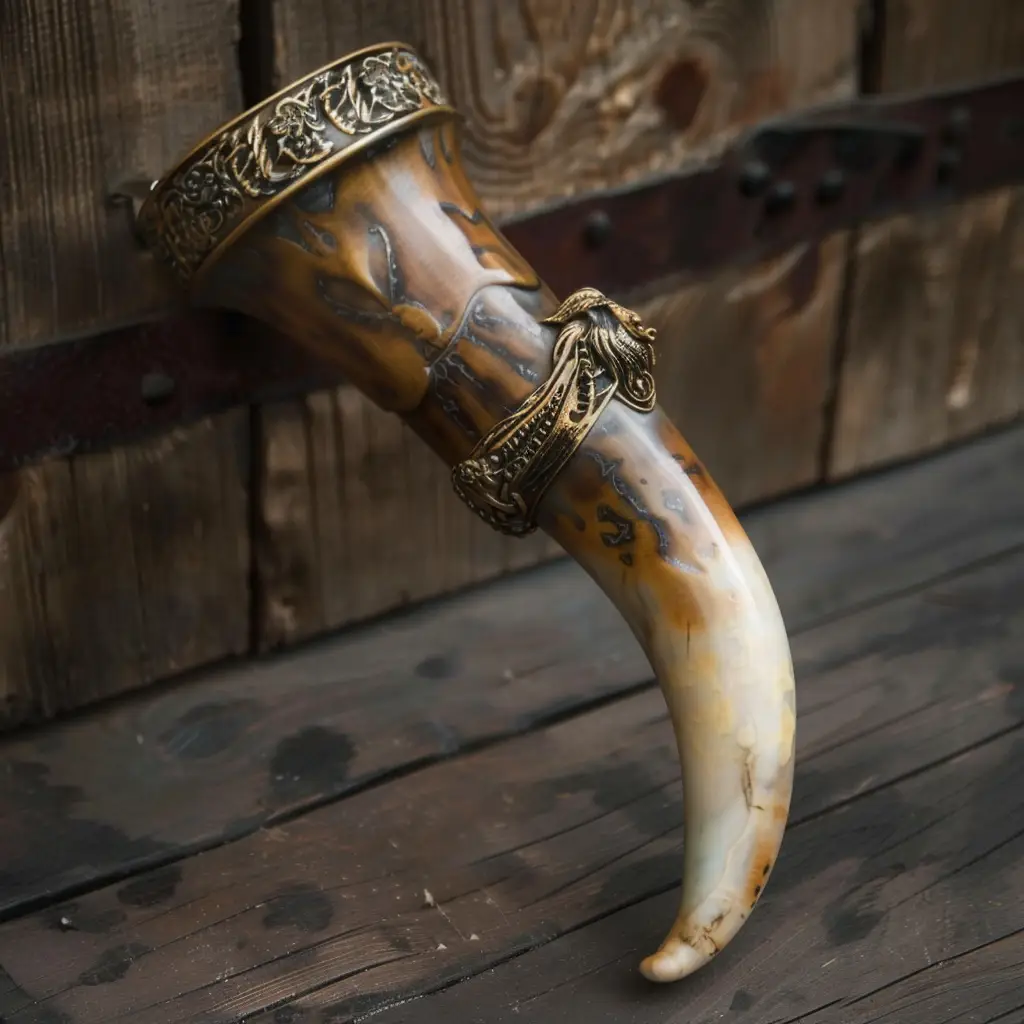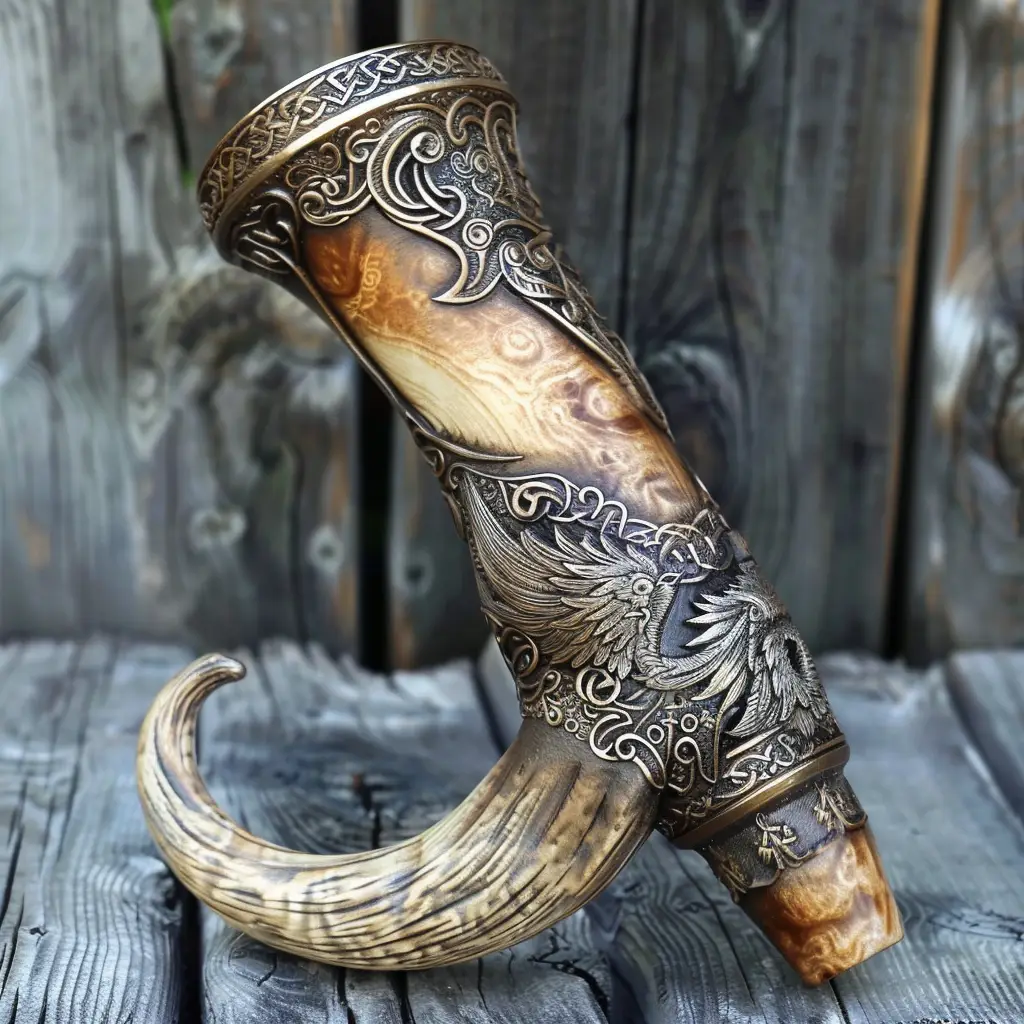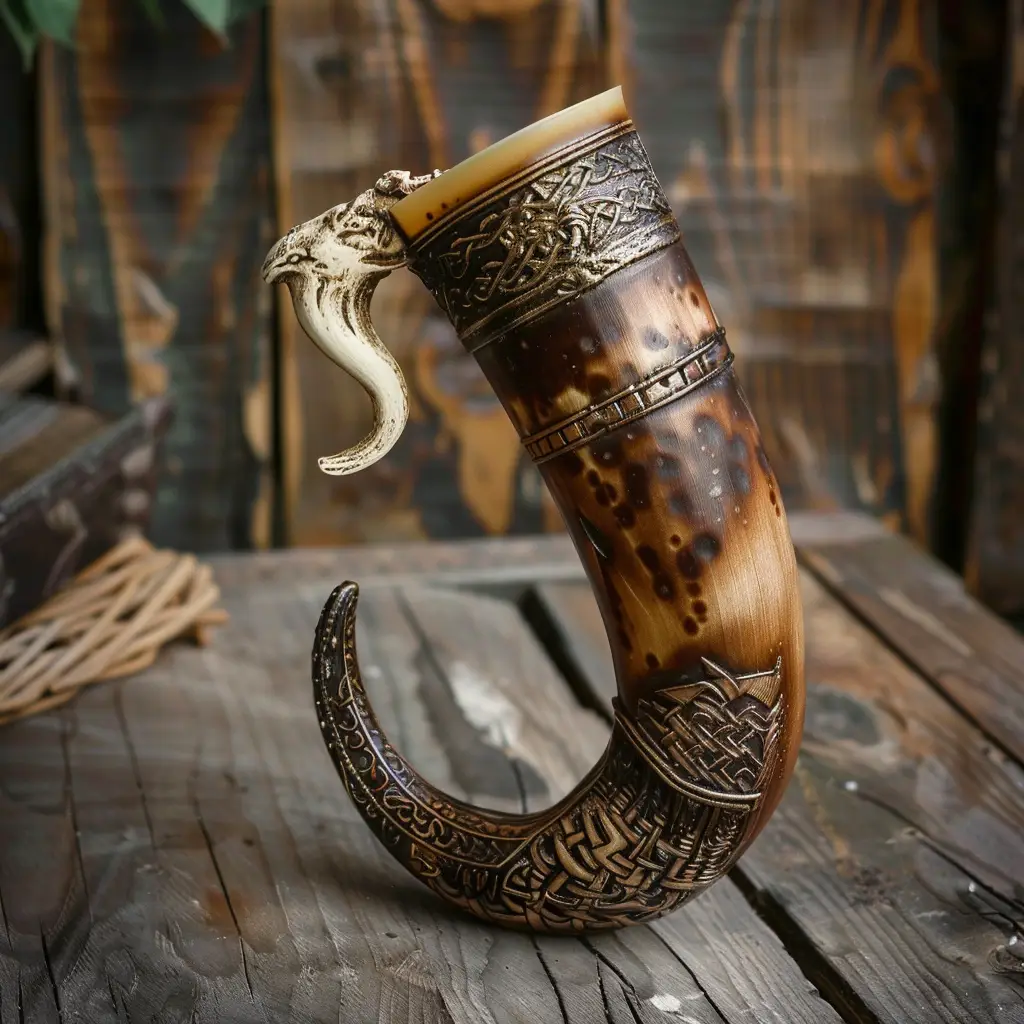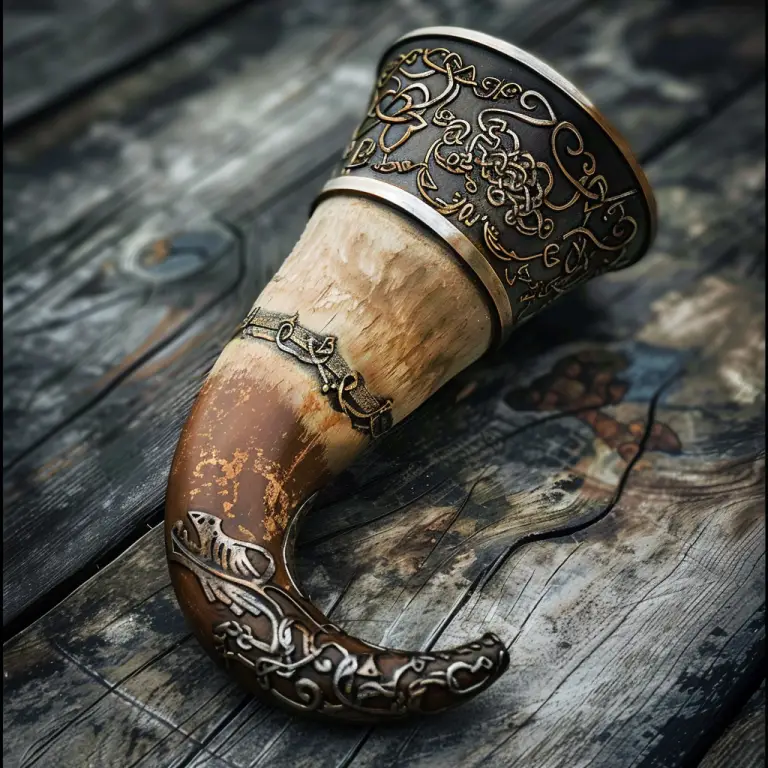Viking drinking horns are one of the most iconic symbols of their culture, often associated with their feasts, rituals, and social gatherings.
Material and Craftsmanship
Animal Horns: Drinking horns were typically made from the horns of cattle, goats, or aurochs (a now-extinct type of wild cattle). The horns were hollowed out, cleaned, and polished.
Decoration: Many drinking horns were ornately decorated, especially those used in rituals or by the wealthy. Decorations included carvings, metal fittings (often silver or gold), and inlays of precious stones. These embellishments often depicted scenes from mythology or intricate patterns.
Uses and Significance
Feasts and Ceremonies: Drinking horns were prominently used during feasts and celebrations. They were passed around, and each participant would drink and often make a toast or boast.
Rituals: In religious and sacrificial ceremonies, drinking horns were used to offer mead or ale to the gods. These acts were believed to gain favour or blessings from the deities.
Status Symbols: A finely crafted drinking horn was a symbol of status and wealth. Owning an elaborately decorated horn was a way to display one’s social standing.
Practicality
Design: Drinking horns have a natural curve, which makes them unique compared to other drinking vessels. They do not have a flat base, so they cannot be set down easily when full. This design meant they were often emptied in one go or held throughout the drinking session.
Stands and Racks: To store and display drinking horns, special stands or racks were used. These stands could be simple wooden holders or elaborate structures, especially for more decorative horns.
Cultural Depictions and Legacy
Mythology: Drinking horns appear in various Norse myths and sagas. For example, the gods are often depicted drinking from horns in Valhalla, the hall of the slain warriors.
Modern Use: Today, replicas of Viking drinking horns are popular in reenactments, festivals, and among enthusiasts of Viking culture. They are used to recreate the historical experience and continue the tradition in a modern context.
Notable Examples
Gallehus Horns: Although not used as drinking vessels, the Gallehus horns are famous gold horns from the 5th century, found in Denmark. They highlight the intricate craftsmanship that could also be applied to drinking horns.
Museum Collections: Many museums around the world, especially in Scandinavia, have Viking drinking horns in their collections. These artifacts provide insight into the materials, designs, and cultural importance of these items.



